Category: General

Aptera tests solar-powered EV, after dropping in-wheel motors
- “Real-world validation testing” completed on inboard-motor setup
- Aptera switched to the layout, instead of in-wheel motors, for its future solar EV
- Per-mile energy consumption remains in line with previous layout
Aptera last week announced that it had completed the first round of “real-world validation testing” of its solar-assisted three-wheeled electric vehicle—after effectively starting over on some aspects of its powertrain.
An Aptera press release said the company had completed this first round of testing—primarily focused on aerodynamics—at a proving ground in the Mojave Desert. But as Aptera said with 2022 Aptera performance preview video, it did lots of real-world dynamic testing and validation, looking at handling, dive, lift, and high-speed stability with the original in-wheel motor configuration.
But this latest round of tests is the first using electric motors in the conventional inboard position, Aptera co-founder and co-CEO Steve Fambro clarified in a statement to Green Car Reports.
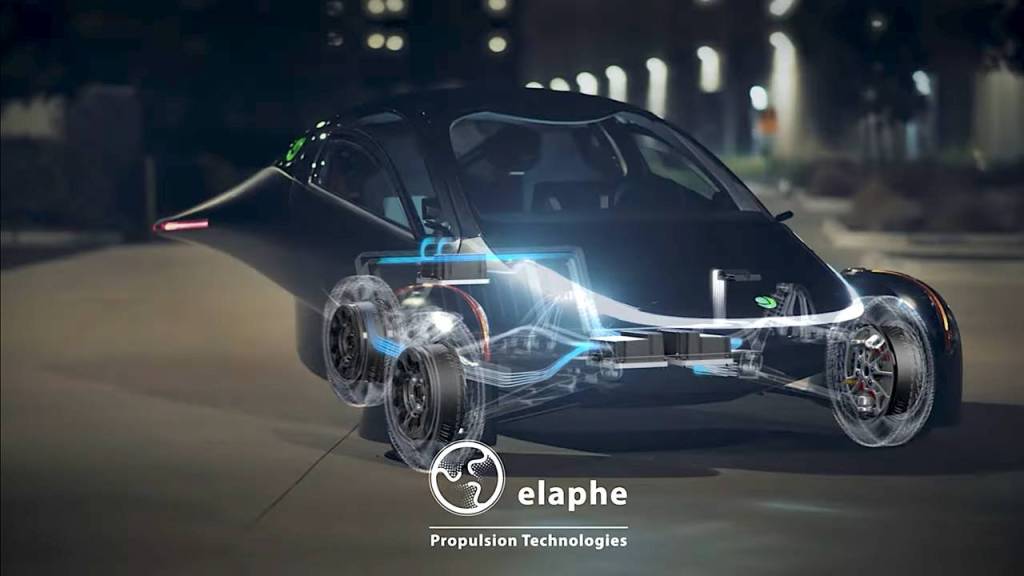
Aptera with Elaphe motors
“As we complete the first round of validation with our new in-board powertrain, we’re seeing strong results that align with our efficiency and performance targets,” Fambro said, in a response to a question about how the inboard motors are measuring up. “While we can’t offer a direct comparison—since Aptera never had a production-intent vehicle with in-wheel motors—our initial testing with our in-board powertrain confirms that we continue to achieve Aptera’s signature ultra-efficiency, with energy consumption per mile remaining in line with our expectations.”
Aptera only completed its first production-intent vehicle last October, combining the new inboard powertrain with other production-spec elements for validation testing. That included coast-down tests, in which vehicles are allowed to coast to a stop to measure aerodynamic drag and driveline energy losses. Aptera claimed one of its production-intent vehicles took three minutes to coast from 60 mph to a complete stop. That’s a positive sign for high aerodynamic efficiency.
Aptera’s release said the company also conducted aerodynamic “tuft testing,” in which material is applied to areas such as the wheel fairings to visually check airflow, and a highway drive cycle measuring energy consumption over hundreds of miles. It plans to conduct range and charging tests next, once more production-spec parts are available and panel fit is further dialed in.
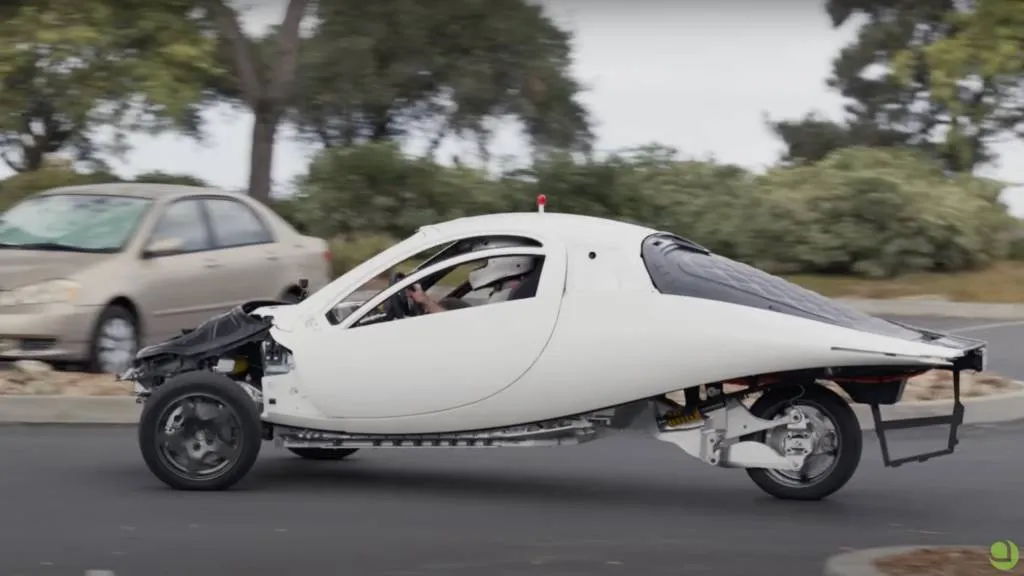
Aptera production-intent vehicle
Dropping in-wheel motors, which was reportedly a cost-related move, was surprising as Aptera had banked a lot of its image and innovation on the tech. Aptera’s Chris Anthony had explained to Jay Leno that engineers could get 30% more regenerative braking than from an induction motor this way, because of in-wheel motors’ greater leverage with magnets away from the axis.
Aptera wants to be more than a niche firm, and it’s mentioned again in recent months that it aspires to build a million vehicles by 2033—amid finances that appear so thin that it might be limited in how many more prototypes it can build.

Stellantis proposes multi-speed transmission for EVs
Stellantis is experimenting with multi-speed transmissions to improve the efficiency of electric vehicles, a recently surfaced patent filing indicates.
Published by the United States Patent and Trademark Office (USPTO) Feb. 27, 2025, but originally filed by the automaker in 2023, the patent application deals specifically with adding a second forward gear to the drive modules in which electric motors are often packaged for use in EVs.
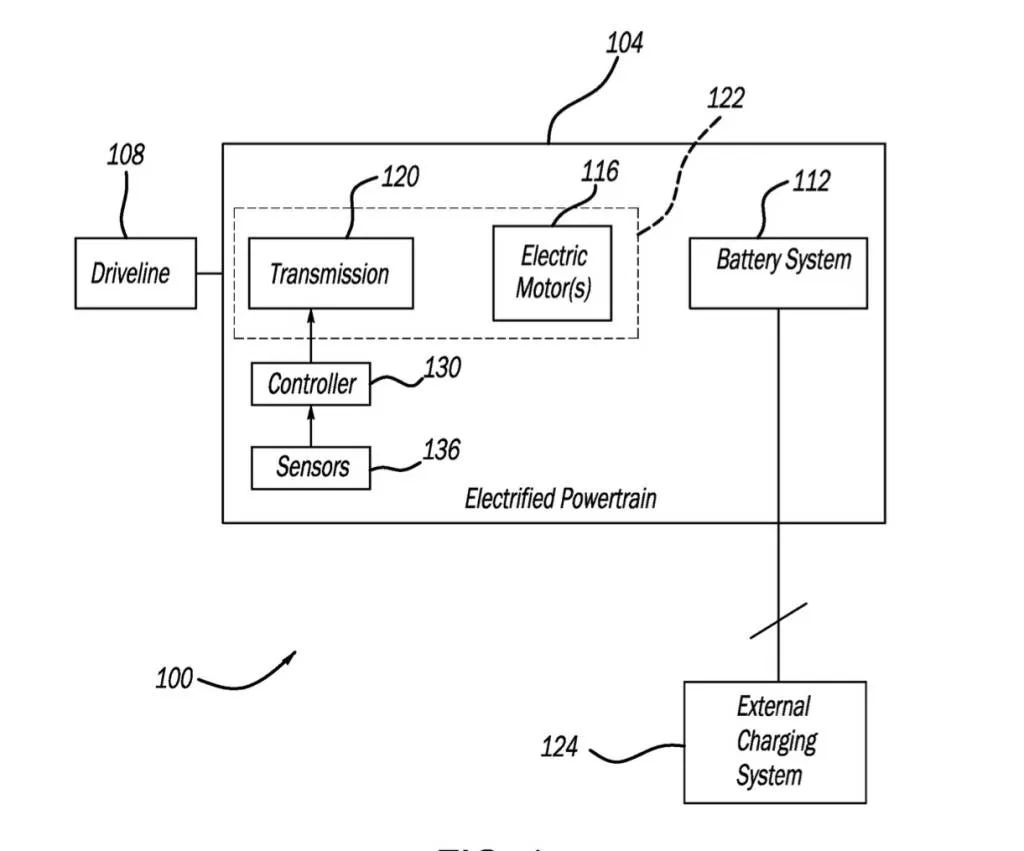
Stellantis EV transmission patent image
The document focusing mainly on how the transmission would shift between the two gears. Stellantis discusses using magnetic fluid, which is currently used in certain adaptive dampers. This fluid contains ferrous metallic particles, which react to magnetic fields. This could be used to move the shafts holding individual gears into position in a more efficient manner versus conventional hydraulically-actuated clutches, Stellantis claims.
While this may just be a case of patent writers trying to cover their legal bases, the document also refers to “electrified vehicles” rather than just EVs, including hybrids and plug-in hybrids like Stellantis’ Chrysler Pacifica Hybrid and Jeep 4xe models. A separate 2-speed gearbox for an electric motor as part of a hybrid system isn’t unheard of; Mercedes-Benz employs this complex arrangement in some of its current AMG performance plug-in hybrids.
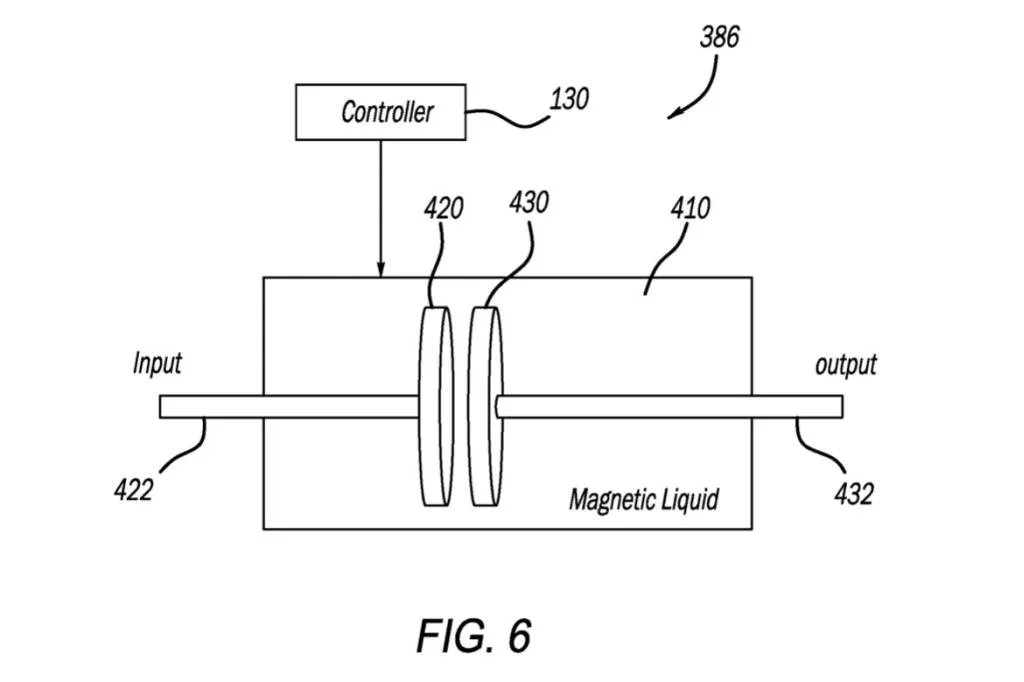
Stellantis EV transmission patent image
This is the second recent Stellantis patent filing related to a multi-speed transmission for use with electric motors. The first was published by the USPTO in January 2024, but was focused on off-road use and involved a different gear-actuation mechanism.
The Porsche Taycan remains the most prominent use of a multi-speed transmission in a production electric car. Mercedes is slated to use one in future EVs as well, and Lucid has patented one of its own. Volkswagen has indicated that it won’t be going this route, however, while Honda has designed a manual transmission—complete with clutch pedal—as it looks for ways to win car enthusiasts’ approval of its upcoming 0 Series EVs.

Rivian patented active aero wheel covers
Rivian is looking to patent wheel covers with active aerodynamic elements to further improve the efficiency of its electric vehicles.
Smooth wheel covers—like the ones available on the updated 2025 Rivian R1S and R1T—can help reduce aerodynamic drag, but they’re generally fixed in place, and thus not optimized for all scenarios. In its patent filing, which was submitted to the United States Patent and Trademark Office (USPTO) in August 2023, but only published by that office Mar. 6, Rivian discusses giving aero wheels movable elements to gain flexibility.
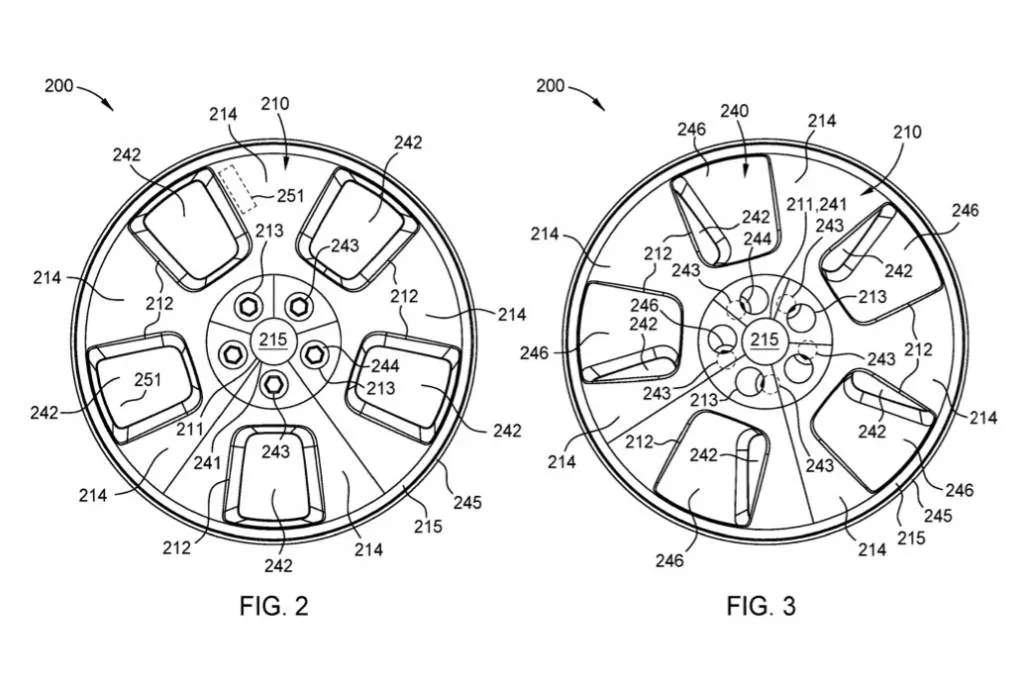
Rivian active aero wheel cover patent image
As described by Rivian in the filing, the wheel cover would include a series of openings aligning with wheel spokes when the cover is in one position, and block them to create a smooth surface in another. That movement would be actuated by a spring, which would rotate the cover to different positions.
In addition to giving customers the aesthetic choice of covered vs. uncovered wheels without having to remove anything, Rivian suggests in the filing that active wheel covers could help evacuate built up air pressure from the wheel wells—further improving aerodynamic performance. In their open position, the wheel covers could also serve a cooling function, according to the automaker, similar to the active grille shutters on many current production cars.
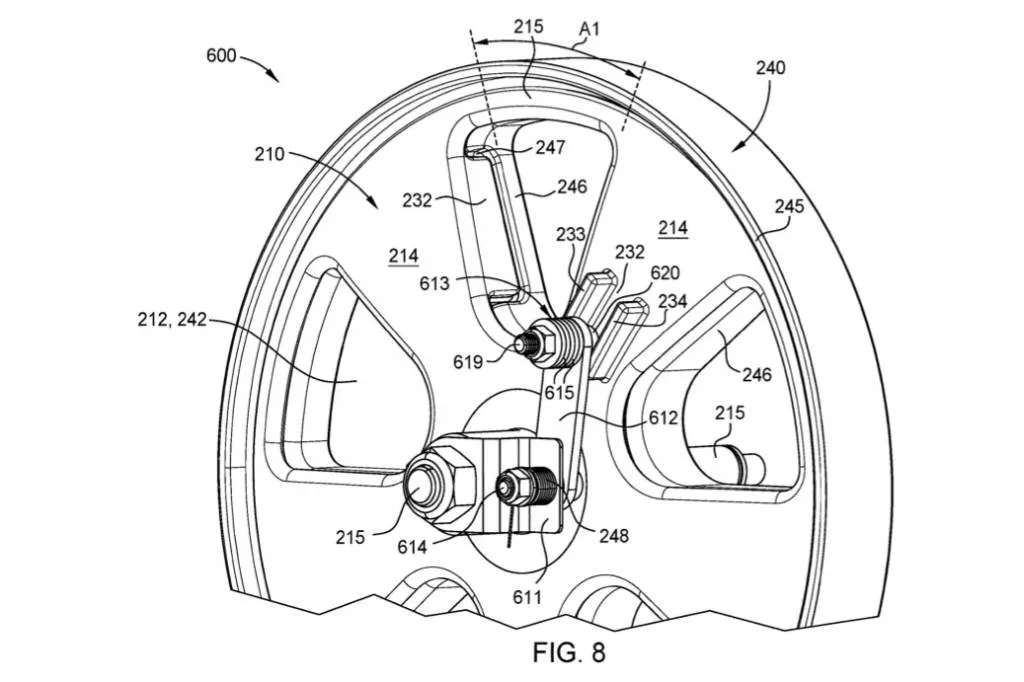
Rivian active aero wheel cover patent image
The boxy shapes of SUVs and pickup trucks like Rivian’s electric off-roaders presents a challenge in minimizing drag. That’s led other automakers to consider some elaborate active aerodynamic aids, such as the deployable rear step with an integrated diffuser for pickup trucks patented by Stellantis.
Hyundai has also tested an active air skirt that the automaker believes could be helpful in reducing drag in SUVs, or any electric vehicles with wider wheels. The automaker said in 2024 that tests using a Genesis GV60 from its luxury brand showed a 2.8% reduction in the coefficient of drag, worth an estimated 3.7 miles of range. But so far Hyundai hasn’t discussed production plans.

2022-2023 Ford F-150 Lightning may charge quicker after software update
Earlier Ford F-150 Lightning electric pickup trucks may charge at a faster rate at DC fast chargers thanks to an over-the-air (OTA) update.
News of the update, available for 2022 and 2023 models, was first reported by InsideEVs Thursday and confirmed to Green Car Reports by Ford spokesperson Sam Schembari, who explained that the update raises the maximum current for DC fast charging, from 450a to 500a, which can result in quicker charging in certain situations.
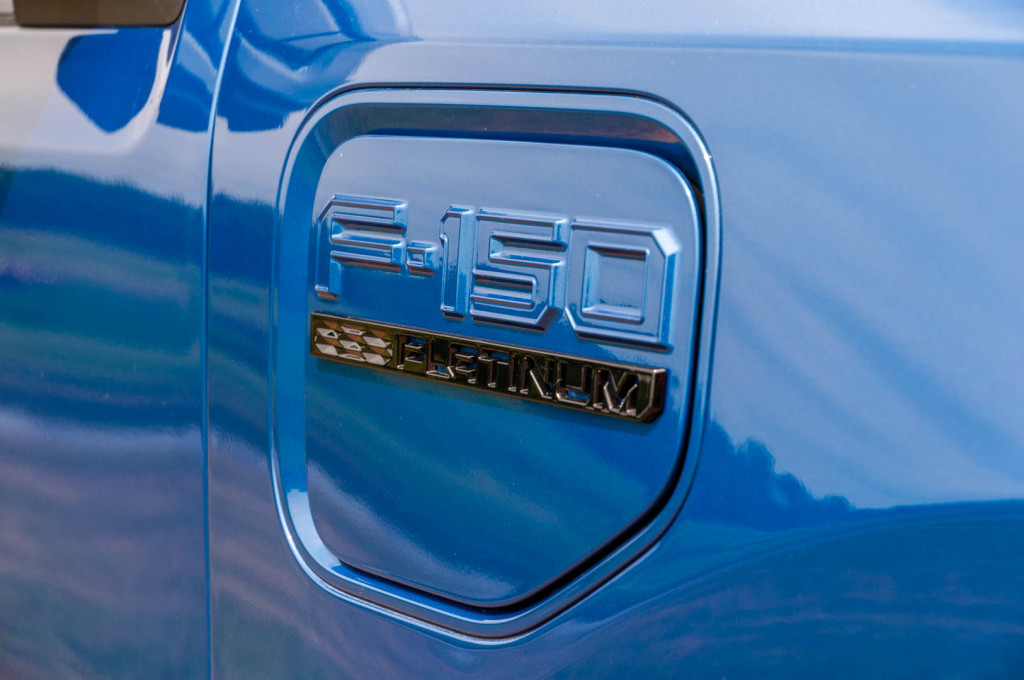
2022 Ford F-150 Lightning
The update launched for the 2024 model year, and is still included on 2025 models, but Ford has also been rolling it out to the earlier model years in batches, Schembari said. With the OTA update, every model year of Lightning now benefits from this improvement in DC fast-charging performance.
Based on a sample of real-world reports seen by Green Car Reports, that could cut about five minutes off the long-range Lightning’s 10-80% charge time, bringing it closer to 40 minutes, from the previous 45 minutes or so, in ideal situations.
Recycling the name of a performance truck that dated back to the 1990s, the Lightning arrived for the 2022 model year. Instead of building a dedicated EV, Ford adapted the existing F-150 platform while adding useful features like a front trunk and available home backup power system. The formula was good enough for the Lightning to earn Green Car Reports Best Car To Buy 2023 honors.
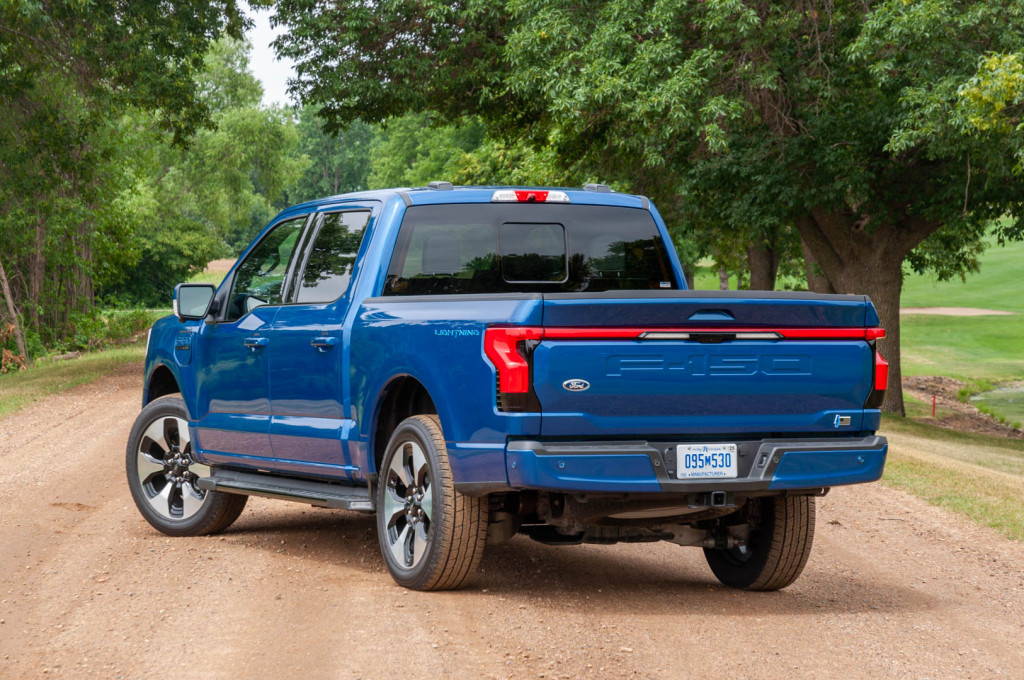
2022 Ford F-150 Lightning
The Lightning received a range boost for the 2023 model year, while a mid-tier Flash grade joined the lineup for 2024—with prices fluctuating continuously throughout. No major changes were made for the 2025 model year.
Ford is expected to replace the Lightning with a new electric full-size truck in 2027. That truck, codenamed Project T3, was due to launch this year but was pushed back amid a reshuffle of Ford’s EV plans. In the meantime, the Lightning is holding up well—in part thanks to OTA updates that can improve trucks even after they’re driven off dealer lots.

2025 Fiat 500e gets $2,000 price cut, Armani edition
The Fiat 500e is one of the cheapest electric vehicles available in the U.S., and it gets even cheaper in its second model year since returning to this market in redesigned form.
The 2025 Fiat 500e costs $2,000 less than it did for 2024, bringing its base price down to $30,500 before destination. That makes the two-door hatchback the second-lowest-priced EV in the U.S. after the 2025 Nissan Leaf, which is priced from $28,140 before destination.
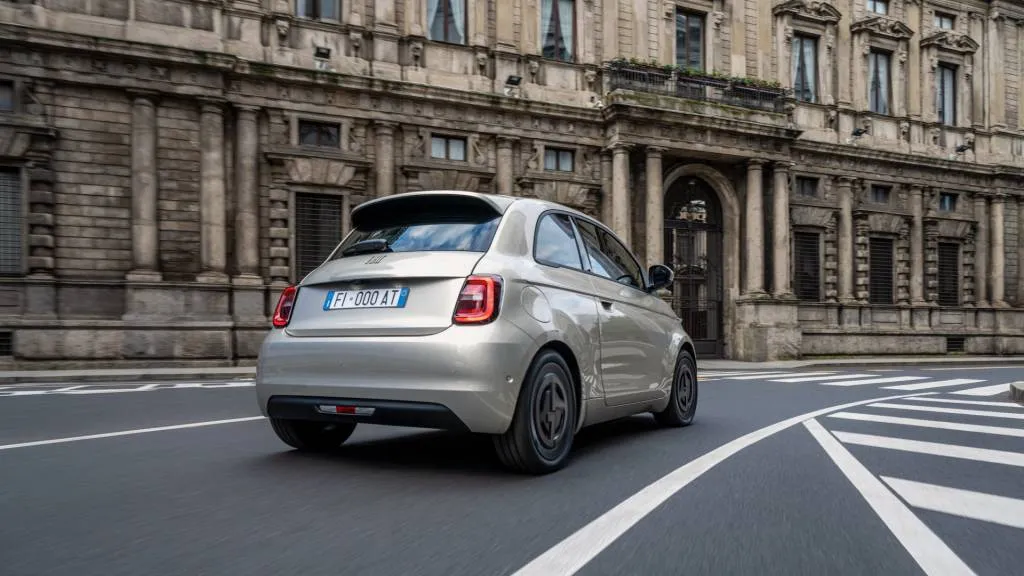
2025 Fiat 500e Giorgio Armani Collector’s Edition
The price cut was first reported by CarsDirect, which later received an official statement from a spokesperson for Fiat parent Stellantis. It explained that the current-generation Fiat 500e has been in production much longer for the European market and that as a result the automaker has found some places to cut production costs.
The other big news for Fiat’s sole U.S.-market model is a Giorgio Armani Collector’s Edition with exclusive paint colors and interior trim inspired by the fashion brand, plus wheels shaped like the Armani logo. Revealed at the 2024 Los Angeles auto show last November, it’s set to be part of the lineup for 2025, but hasn’t yet been priced for the U.S.

2025 Fiat 500e Giorgio Armani Collector’s Edition
While no longer a compliance car, like the original, the 500e was set to serve as a litmus test for American electric small-car demand—and short-range EV demand. Its 42-kwh battery pack provides just 149 miles of EPA range. It appears that demand was very low, as the parent company had to reel back and pause production.
That said, we called the 500e pretty charming for urban use in a first drive, though we do wonder if a four-door might be more popular. Meanwhile, parent Stellantis has been testing battery swapping with this model—while considering a gasoline option, despite ostensibly planning this generation to be electric-only.

Electric Maserati MC20 Folgore supercar canceled due to lack of demand
Maserati has canceled a planned all-electric version of its MC20 supercar, citing lack of customer interest.
The news was first reported on Mar. 6 by Evo, which referenced an official statement from the automaker. It’s an indication that Maserati’s commitment to phasing out gasoline cars by the end of the decade is already weakening.
“The project was stopped due to the current forecast for insufficient demand in the super sports car market for a battery electric vehicle,” the statement read.
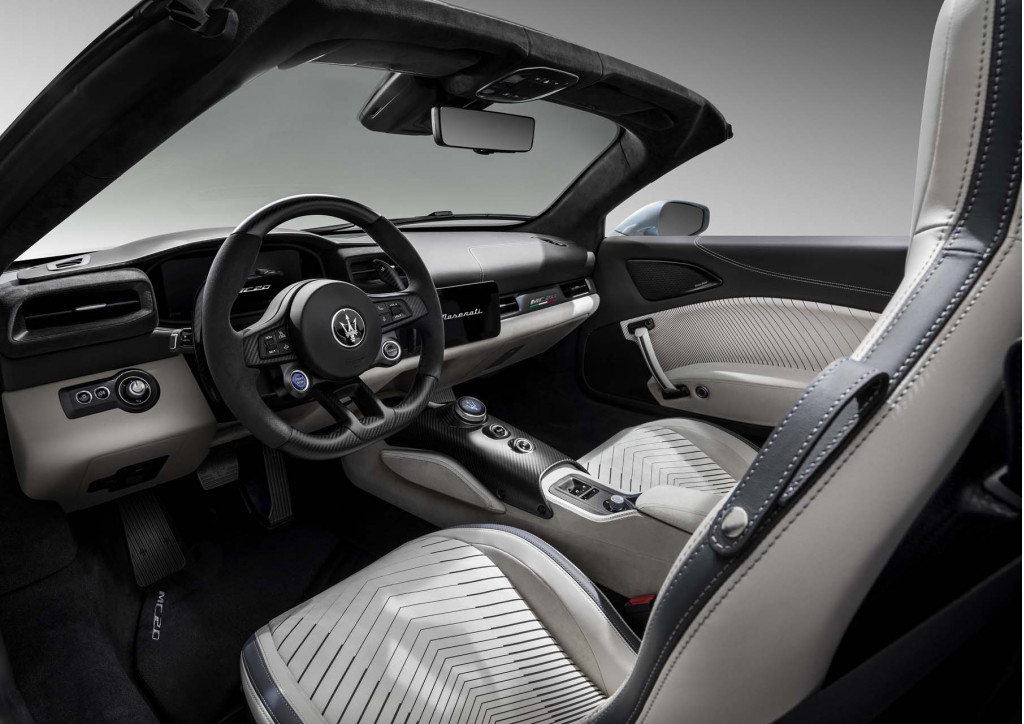
2023 Maserati MC20 Cielo
Maserati in 2022 said it would offer fully electric versions of every model by 2025, and would aim for an all-electric lineup by 2030. Last year the automaker said it would advance that timeline to 2028, with the phasing-out of gasoline engines only begun with the deletion of V-8 engines.
The electrification plans announced in 2022 had also been proceeding apace up to this point. Maserati has launched promised electric versions of its Grecale compact crossover, GranTurismo coupe, and even the GranCabrio convertible despite the many additional engineering challenges inherent in convertible EVs.

2023 Maserati MC20 Cielo
Maserati had also planned electric versions of its next-generation Quattroporte sedan and Levante SUV, but it hasn’t given an update on those models. The EVs are badged Folgore, the Italian word for lightning.
Other luxury brands have also noted flagged demand for high-end EVs. In a September 2024 interview, Bentley CEO Frank-Steffen Walliser said the luxury market was rejecting electric cars. Bentley still plans to launch its first EV in 2027 and go all-electric by 2035, though. Porsche, which already sells the Taycan sedan and an electric version of its Macan compact crossover, has indicated that the EV transition is taking longer than anticipated.

VW ID.4 and Audi Q4 E-Tron EVs recalled due to software issue
Volkswagen and Audi are recalling 60,490 electric vehicles because of a potential software issue that could prevent shift-lever indicators on instrument panels.
The recall includes 2021-2023 VW ID.4 and 2022-2023 Audi Q4 E-Tron and Q4 E-Tron Sportback electric crossovers, which share the VW Group’s MEB platform. These vehicles left the factory with software that might not show the letter “N” for “neutral” in the instrument cluster when the car is shifted into that position, according to the NHTSA.
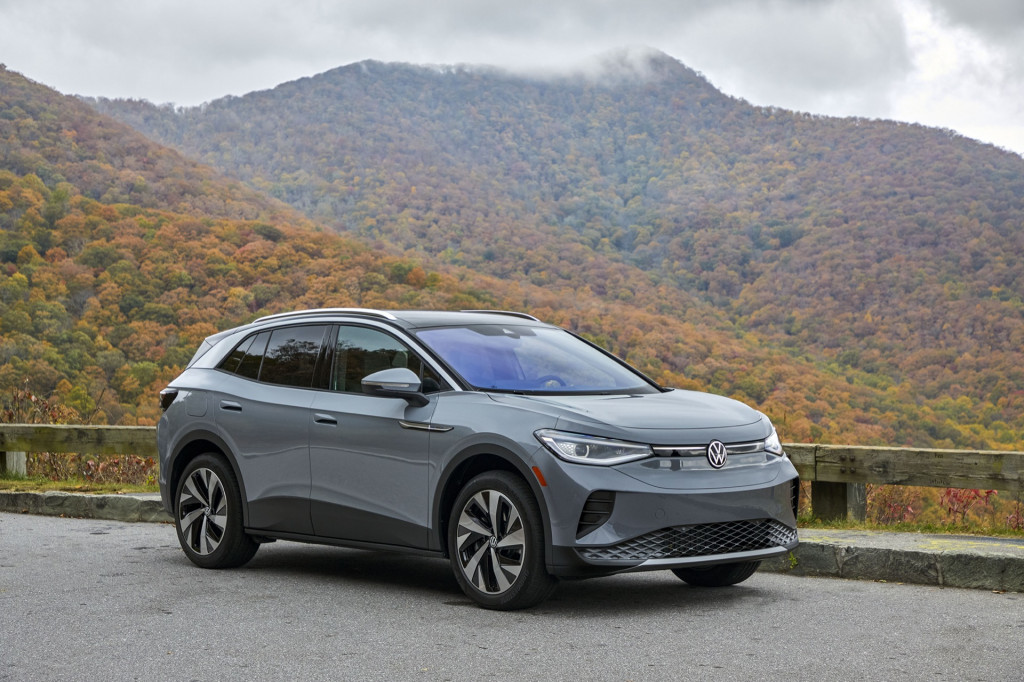
2023 Volkswagen ID.4
If the vehicle is left in neutral, and the parking brake is not set, it could roll away. Or the vehicle might accidentally be left in Drive when parked—or shifted to Neutral while in motion.
To remedy this, dealers will install updated software for the brake control unit, which has already been implemented on newer-build vehicles, free of charge.
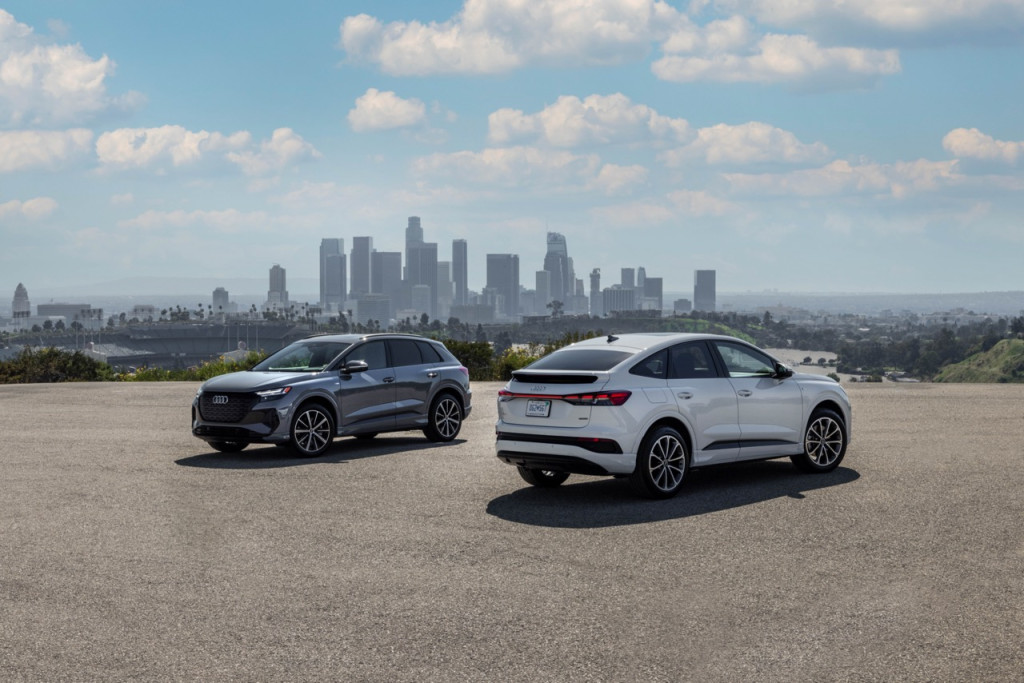
2023 Audi Q4 E-Tron
The two brands plan to mail owner notification letters starting Apr. 25. Owners will likely need to make a service appointment for this; they can also call VW’s customer service department at 800-893-5298 or Audi’s at 800-253-2834, or visit the VW and Audi recall websites, for more information. VW’s reference number for this recall is 97H3, while Audi’s is 454R.
VW just came off a major ID.4 recall. In late 2024, VW recalled 98,800 of the electric crossovers, while stopping both sales and production, because their doors could open unexpectedly due to water leaking onto door-handle-circuit boards. VW said in January that it was resuming sales and production after developing a fix and readying the necessary parts.

Telo shows its $41,520 electric truck in pre-production form
Telo Trucks on Thursday unveiled the first pre-production unit of its MT1 compact electric pickup truck.
The next step toward getting the tiny truck into customer hands, California-based Telo said in a press release, is safety and durability testing, followed by regulatory homologation, which Telo hopes to finish next winter.
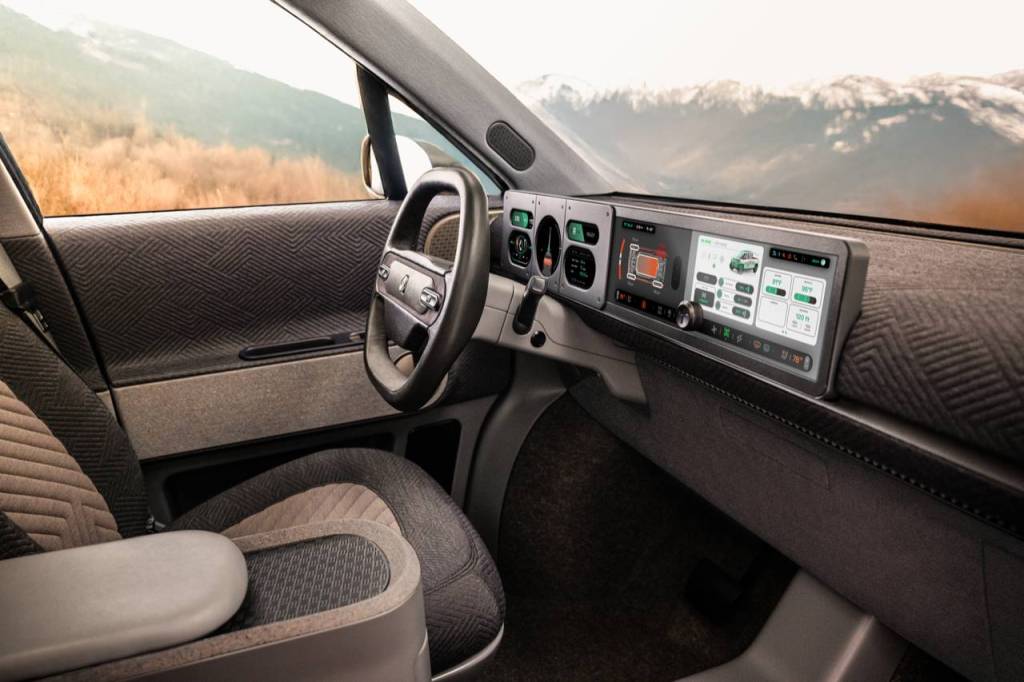
Telo MT1 electric truck prototype. (Mar. 2025)
Unveiled in 2023 in an early concept form, the MT1 stands in stark contrast versus current electric trucks, with a very compact size and focus on efficiency. It’s just 152 inches long—the same as the outgoing-generation Mini Cooper SE two-door hatchback—yet Telo claims it has room for five adults, with the same legroom as full-size crew cab pickups.
The MT1’s 60-inch bed is longer than that of a Rivian R1T. A midgate allows long objects, including a 9-foot surfboard or a 4×8 sheet of plywood, to fit behind the front seats, Telo claims. An underbed storage nook that Telo calls the Monster Tunnel will offer additional space.
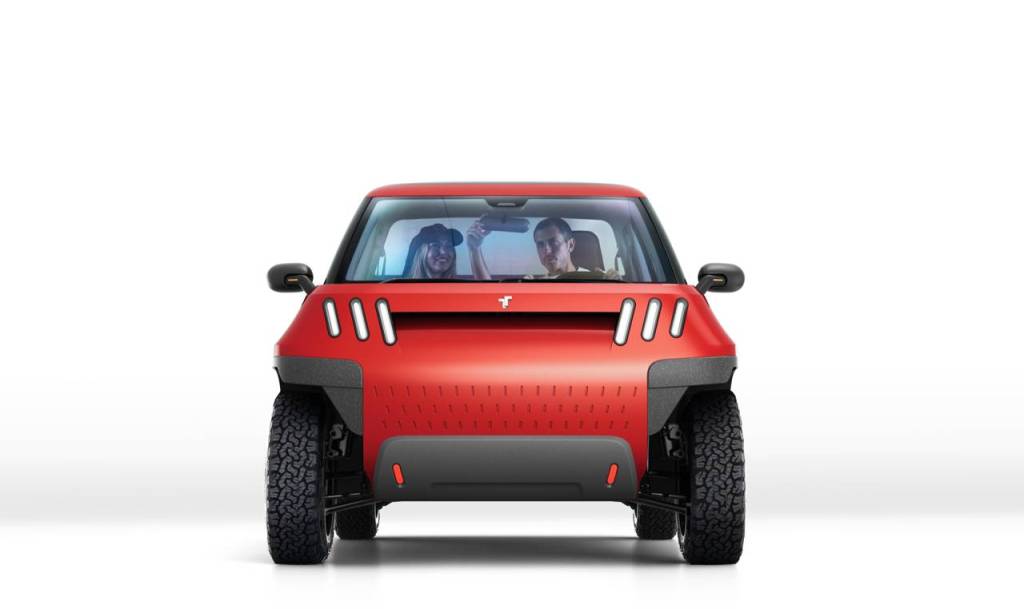
Telo MT1 electric truck prototype (Mar. 2025)
Telo claims to have more than 5,000 pre-orders for the truck at $152 apiece—referencing the truck’s length. The actual base price is $41,250 for a 300-hp single motor rear-wheel drive model with an estimated 260 miles of range. Telo plans to offer a larger battery pack stretching range to an estimated 350 miles for $3,980 extra, and a 500-hp dual-motor powertrain for $4,769 extra.
The company previously said its larger pack would have a 106-kwh capacity, but it hasn’t quoted a capacity for the smaller pack. It has claimed that the MT1 will be the world’s most efficient electric truck, something Telo hopes to achieve with help from another EV startup—Aptera. The fellow California startup plans to supply solar panels to Telo, although it still hasn’t gotten its own solar-assisted EV into production.

Volvo EX60 EV teased ahead of 2026 debut
During this week’s reveal of its ES90 electric vehicle, Volvo also briefly teased what will likely be its next EV.
The reveal, which was streamed on Volvo’s YouTube channel Wednesday, includes a brief behind the scenes moment with the EX60, the electric counterpart to the Volvo XC60 crossover SUV that’s expected to arrive in 2026. At roughly the 24-minute mark, the back of a clay model of the EX60—with a license plate identifying it as such—is briefly shown.
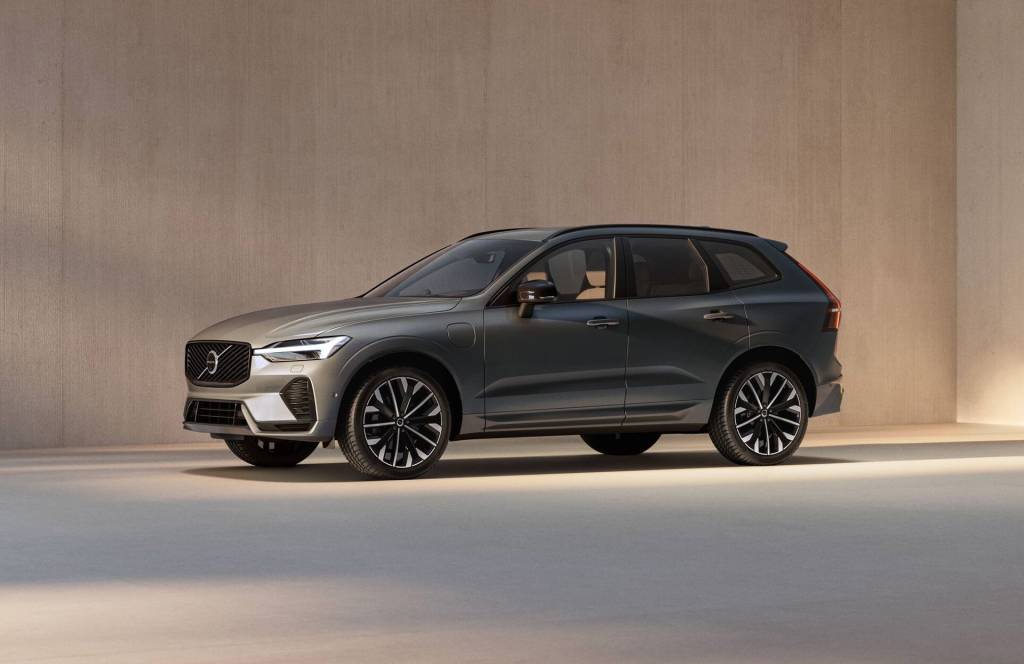
Updated Volvo XC60
This quick glimpse shows a split-taillight arrangement similar to the Volvo EX30 and EX90, which the EX60 will slot between. Using the person standing alongside the clay model for scale, it appears that, as expected, the EX60 is sized somewhere between the compact EX30 and the three-row EX90 flagship.
While it’s only just now rolling out its SPA2 platform with the EX90 and ES90, the EX60 is tipped to use yet another new platform, called SPA3, which Volvo announced last September. SPA3 will reportedly aim for greater scalability through the use of mega castings, or large single castings that form parts of the body shell normally made up of smaller individual components. Volvo said in 2022 that it plans to implement mega casting manufacturing at the Torslanda, Sweden, plant that builds the XC60.
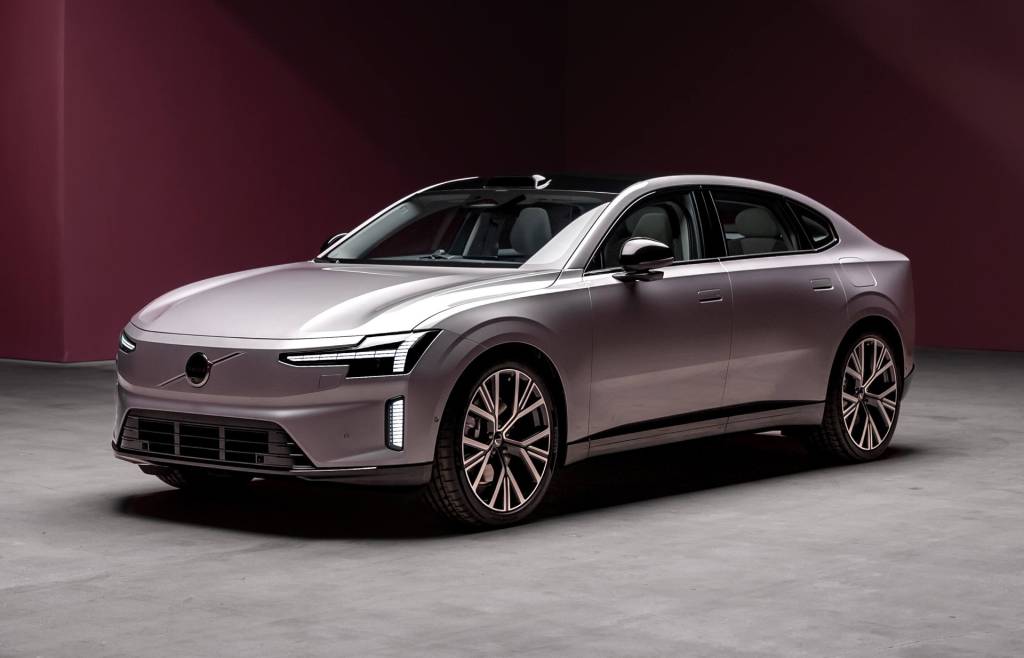
Volvo ES90
However, SPA3 is expected to share an electrical architecture and software-defined-vehicle approach with SPA2. Volvo is betting heavily on what it calls the Superset technology stack, which the automaker hopes to use to offer more software-based features. More powerful chips for this stack will debut with the ES90, and will be retrofitted to the EX90.
In addition to computing upgrades, the ES90 wraps the SPA2 hard points in a more aerodynamic high-riding hatchback shape, while adding 800-volt charging. Volvo is taking orders in Europe, but it hasn’t discussed U.S. launch timing.

Kia EV9 will power your house for $6,440
- Allows long-range EV9 to provide up to 100 kwh—for days of home backup
- Only offered in a few states now, nationwide rollout yet to come
- Capable of vehicle-to-grid functions, but that depends on local utility
Kia on Tuesday announced pre-orders for the Wallbox Quasar 2 home charger and accompanying hardware that will unlock the bidirectional charging capability of the automaker’s EV9 electric SUV.
Kia confirmed in late 2023 that the Quasar 2 would be the first EV charger enabling bidirectional charging with the EV9, and that it would serve up home-backup and vehicle-to-grid functionality. That requires both the 12-kw Quasar 2 charger itself and a power recovery unit grid disconnect switch, which Wallbox bundles for $6,440.
The charger and power recovery unit will only be available in limited quantities, Kia noted in a press release, with EV9 owners who pre-order now receiving priority once the hardware is ready to ship. So far, those pre-orders are limited to residents of California, Florida, Illinois, New Jersey, New York, Texas, and Washington, with a nationwide rollout to follow, according to Kia. Green Car Reports has reached out to Wallbox and Kia for clarity about availability, as both companies had previously confirmed an earlier timeline for deliveries.
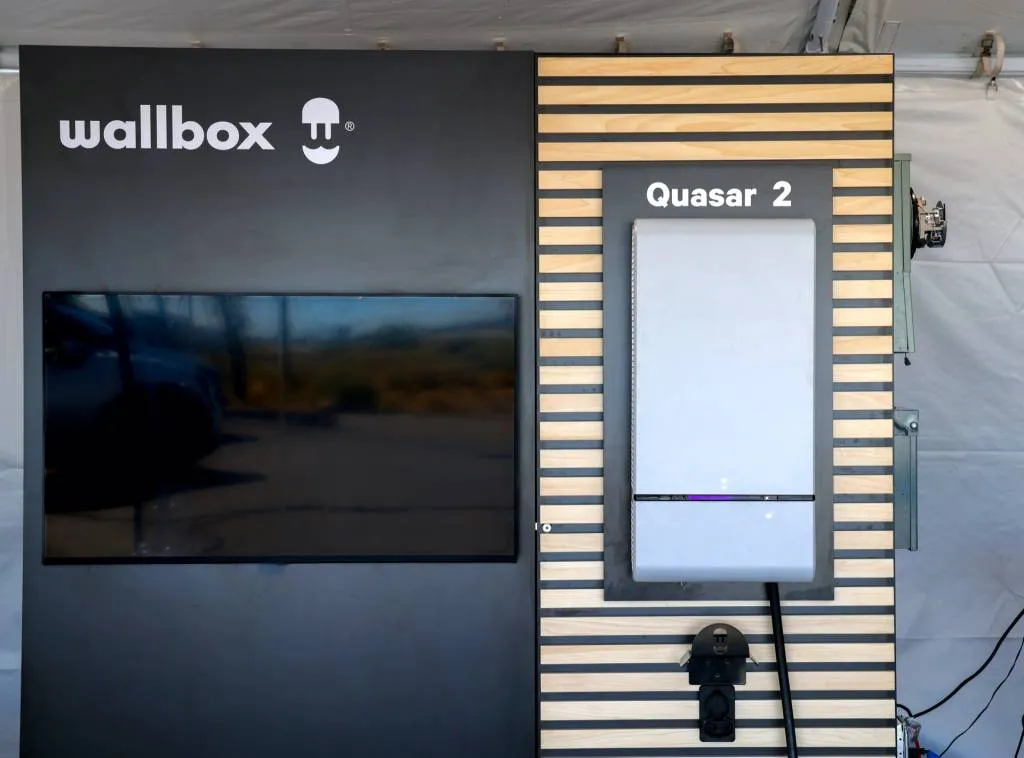
Wallbox Quasar 2 with Kia EV9
Thanks to a CCS interface, as opposed to the CHAdeMO interface of the original Quasar charger, the Quasar 2 lets owners take advantage of the bidirectional charging capability built into the EV9’s E-GMP platform.
That it includes a Power Recovery Mode for home backup power which, Wallbox told Green Car Reports in 2023, lets owners tap into 76 kwh or 100 kwh of energy from the EV9’s battery pack—more than five times the amount of a 13.5-kwh Tesla Powerwall and enough to power the typical American home for up to four days.
The Quasar 2 can also be tied into a home’s electric panel, allowing the EV9 to supplement home electricity and be charged during off-peak times, as well as feed power back into the grid. The latter functionality depends on local utilities, though.
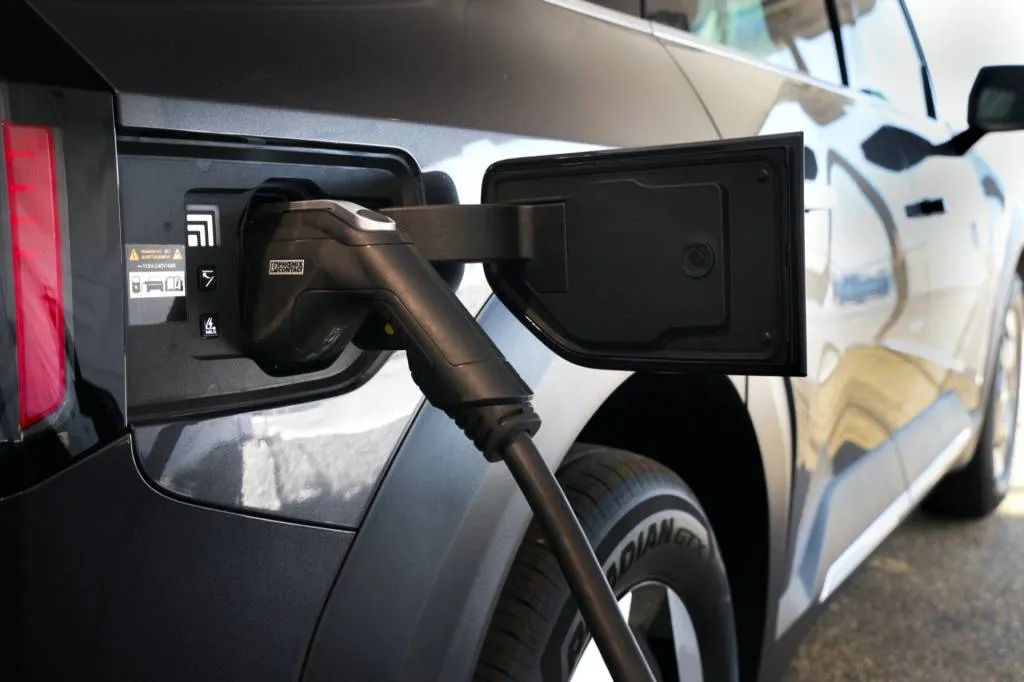
Wallbox Quasar 2 with Kia EV9
The quoted price for the complete kit comes close to the roughly $6,000 Ford has quoted for the home backup power system available for the F-150 Lightning—although based on anecdotal reports, some installations cost significantly more. General Motors in late 2024 announced complete home energy kits, with external battery packs plus chargers and the necessary hardware for home backup power. Those kits start at $12,700 with a battery pack, but GM has also priced its charger and home-power enablement hardware individually at $1,699 and $5,600, respectively.
Putting home-backup power functionality aside, there’s one other solution enabling EV owners to supply energy back to the grid: Fermata’s FE-20 system available for the Nissan Leaf.
